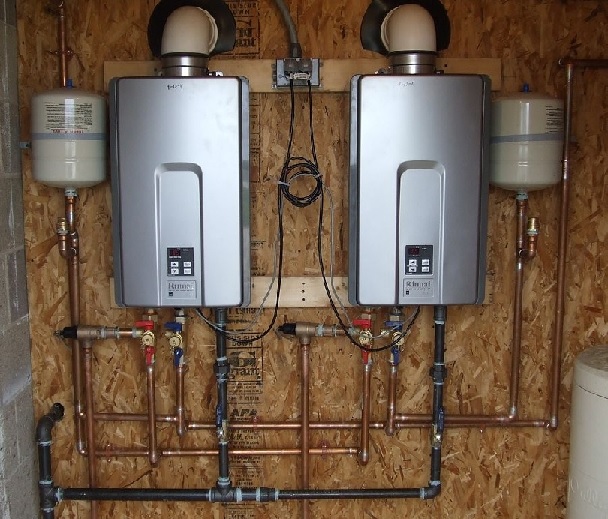Tankless water heaters don’t rely on an enormous storage tank for heating the water on demand, meaning that hot water starts flowing sooner. While this might work for certain households, larger models may be necessary.
Continue reading if you’d like to learn how to make the transition into a new tankless water heater unit.
After going through the blog you can visit the following link to learn the pros and cons of installing a tankless water heater in your home.
1. Ensuring Proper Gas Supply and Ventilation for Your Tankless Water Heater
Tankless water heaters may have higher upfront costs than traditional systems but are much more energy-efficient, using only the necessary water and being 8-34% more cost-effective overall.
Like all plumbing appliances, these devices need regular upkeep. Your plumber can assess the system and perform routine maintenance such as clearing out drain lines, replacing filters and removing sediments from your system.
A plumbing company will also ensure that the gas supply line can support their new water heater, especially tankless models that run off the gas and may need to connect to a larger gas meter and require the pipe to be expanded to accommodate its higher flow rate. They should also ensure all vents are clear of debris as this poses a fire hazard; normally, this comes as part of their installation package and disposal of old tanks.
2. Schedule a Pre-Installation Plumbing Inspection
Tankless water heaters require different installation specifications than traditional tanks in homes, as builders usually design houses around old-style heaters and replacing one with a tankless unit may present significant difficulties.
Your plumber must also inspect and adjust your gas lines and meter to ensure an adequate flow rate, which will help ensure that your new water heater functions safely and correctly.
Your vents must also be regularly checked to ensure nothing is blocking them. A blocked water heater vent reduces efficiency and is a severe fire risk; cleaning them regularly keeps them free of debris and safe for your home.
3. Regular Maintenance of your Tankless Water Heater
Tankless water heaters can be an ideal choice for many homeowners as they provide on-demand hot water on demand and can save money over time. But like any appliance, a tankless water heater requires regular maintenance to function at its best.
Your plumber can assess the system and perform routine maintenance such as clearing out drain lines, replacing filters and removing sediments from your system.
Your tankless water heater requires appropriate ventilation. Gas models require a vent pipe that runs through your roof or wall, while electric models only need ducting outside your house. Both should be regularly checked during autumn and winter to ensure that leaves or debris haven’t blocked their pipes and caused carbon monoxide poisoning and toxic odor release from your unit.
4. Why Professional Installation is Crucial for Tankless Water Heaters
Utilizing an on-demand water heater can save energy and money while making your home safer. Since these water heaters don’t contain tanks that could leak or harbor bacteria, they’re up to 34% more energy-efficient than traditional models.
If you switch from an older tank system to a tankless unit, a plumber will disconnect water and power sources before unhooking and disposing of your old heater according to local regulations. They’ll also connect your new unit directly to the water line while installing venting as required, if applicable for gas tankless heaters.
Installing or switching from a tank-style water heater requires the expertise of a licensed plumbing contractor, as these systems often involve gas lines and venting.
Even DIY attempts could void warranties and put you and your family at risk from carbon monoxide poisoning or electric shock.
